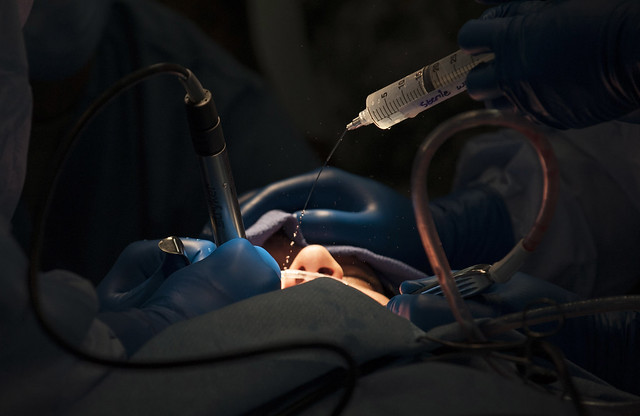An interesting article titled “Does Topical Ozone Therapy Improve Patient Comfort After Surgical Removal of Impacted Mandibular Third Molar? A Randomized Controlled Trial” appears in the 2017 edition of the Journal of Oral and Maxillofacial Surgery (vol. 75 no. 51.pp. e1-51.e9) written by Sivalingam et al. The article explores using topical ozone for patients after wisdom teeth surgery.
In the article a discussion is made of how medical grade ozone has been used to help with surgical treatment and with several diseases such as infections and burns. The author devised a study to see if topical ozone therapy improves patient comfort after wisdom teeth removal when compared to systemic antibiotics. The authors sought to explore if ozone gel was able to decrease postoperative pain, swelling, and mouth opening after wisdom teeth surgery. The authors set up a split-mouth study where one side of a patient’s mouth was assigned topical ozone application alone and the other side was assigned systemic antibiotics. A time period of three weeks was present between each side of the mouth that had a single wisdom tooth extracted. A total of 33 patients were included in the study. Pain was assessed using a modified visual analog scale from a scale of 0 to 10. Mouth opening was assessed using calipers. Swelling was assessed using a a flexible measuring tape using three reference planes. Patients received local anesthesia using 2% lignocaine hydrochloride with 1:80,000 adrenaline bitartrate. For the side of the mouth receiving ozone a ozone gel was utilized. When the side of the mouth receiving antibiotics was used antibiotics were given at 3 times a day for 5 days. Both groups received ibuprofen 400-mg tablet and paracetamol 333- mg tablet 3 times a day for 2 days after surgery although additional ibuprofen and paracetamol were allowed as needed.

The authors found that average pain scores in the antibiotic and ozone groups were 7.48 and 5.45 one day after surgery, 5.15 and 2.97 three days after surgery, and 0.94 and 0.06 seven days after surgery, values that showed a statistically significant decrease in pain for the ozone group. The average amount of swelling for the ozone group was 123.09, 113.88, and 104.55 mm one, three, and seven days after surgery and the average amount of swelling for the antibiotic group was 141.48, 127.39, and 112.58 mm one, three, and seven days after surgery. The ozone group had a statistically significant decrease in swelling when compared to the antibiotic group. The maximum amount of mouth opening was 29.27, 35.61, and 45.64 mm on days 1, 3, and 7 after surgery for the ozone group and was 21.61, 29.33, and 41.48 mm, on days 1, 3, and 7 after surgery for the antibiotic group. The ozone group had a statistically significant increase in mouth opening when compared to the antibiotic group. The authors also found that the antibiotic group required more ibuprofen and paracetamol than the ozone group. The authors state
“The noteworthy advantages shown in the study [ozone] group were decreased pain and swelling, improved mouth opening, an expedited wound healing.”
The authors say that the decrease in pain after surgery was attributed to the anti-inflammatory property of ozone leading to a decrease in the release of algogenic chemical mediators. They say that ozone decreases inflammation and improves wound healing. The authors do point out that in some cases ozone is contraindicated and should not be given such as in autoimmune disorders. The authors say that by using ozone it is not necessary to be given antibiotics postoperatively and ozone gel can be cheaply and quickly administered by the patient.
